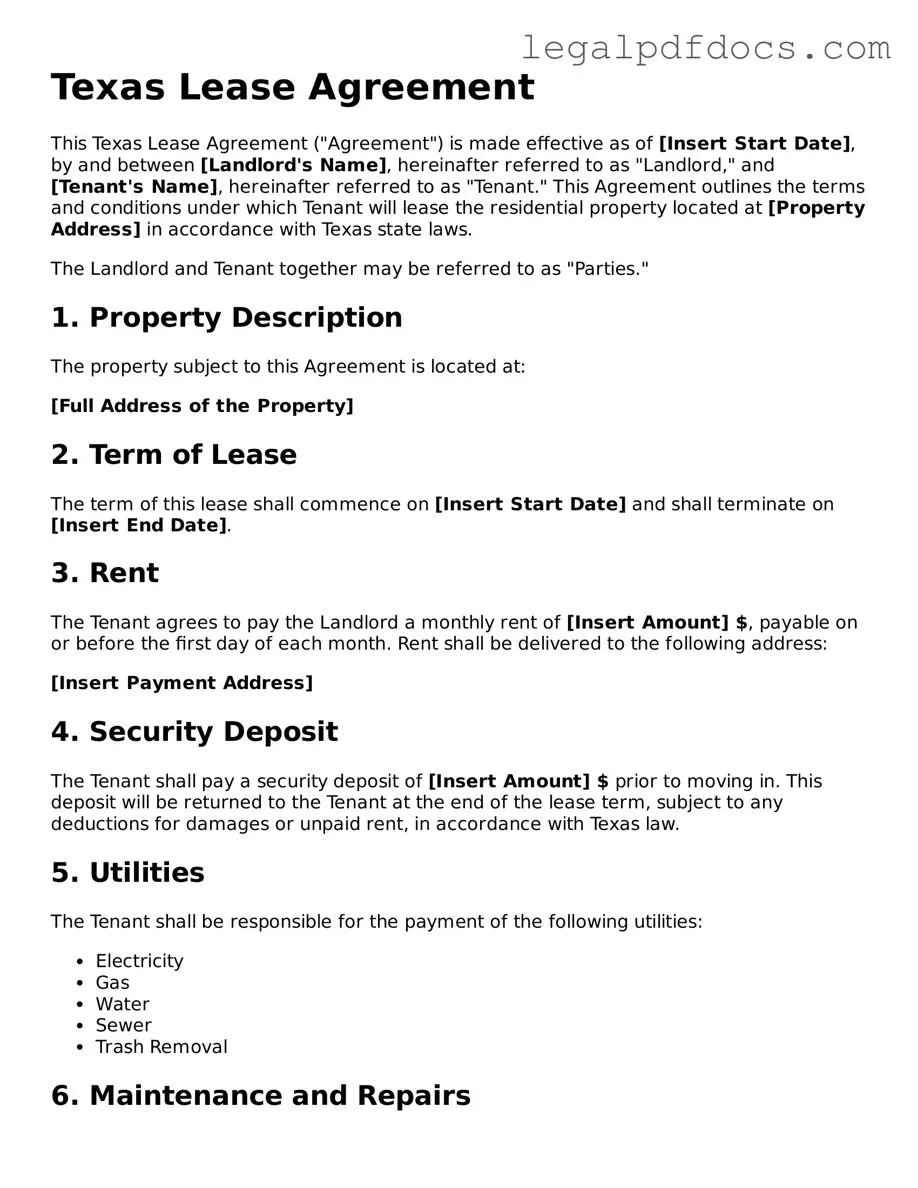Official Lease Agreement Form for Texas
The Texas Lease Agreement form is a legal document that outlines the terms and conditions under which a landlord rents property to a tenant. This form serves to protect the rights of both parties and provides clarity regarding responsibilities, payment schedules, and other essential details. To ensure a smooth leasing process, it is important to fill out the form accurately; click the button below to get started.
Open Lease Agreement Editor Here
